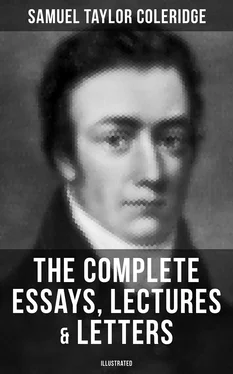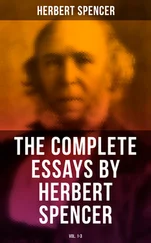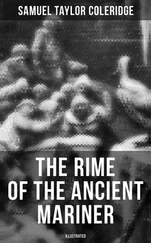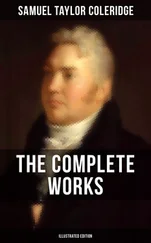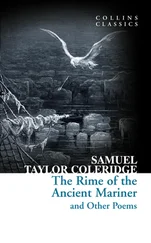Of the former clause in this assertion, as it respects the comparative merits of the ancient metaphysicians, including their commentators, the Schoolmen, and of the modern and British and French philosophers from Hobbes to Hume, Hartley, and Condillac, this is not the place to speak. So wide indeed is the chasm between Sir James Mackintosh’s philosophical creed and mine, that so far from being able to join hands, we could scarcely make our voices intelligible to each other: and to bridge it over would require more time, skill, and power than I believe myself to possess. But the latter clause involves for the greater part a mere question of fact and history, and the accuracy of the statement is to be tried by documents rather than reasoning.
First, then, I deny Hobbes’s claim in toto: for he had been anticipated by Des Cartes, whose work De Methodo, preceded Hobbes’s De Natura Humana, by more than a year. But what is of much more importance, Hobbes builds nothing on the principle which he had announced. He does not even announce it, as differing in any respect from the general laws of material motion and impact: nor was it, indeed, possible for him so to do, compatibly with his system, which was exclusively material and mechanical. Far otherwise is it with Des Cartes; greatly as he too in his after writings (and still more egregiously his followers De la Forge, and others) obscured the truth by their attempts to explain it on the theory of nervous fluids, and material configurations. But, in his interesting work, De Methodo, Des Cartes relates the circumstance which first led him to meditate on this subject, and which since then has been often noticed and employed as an instance and illustration of the law. A child who with its eyes bandaged had lost several of his fingers by amputation, continued to complain for many days successively of pains, now in this joint and now in that, of the very fingers which had been cut off. Des Cartes was led by this incident to reflect on the uncertainty with which we attribute any particular place to any inward pain or uneasiness, and proceeded after long consideration to establish it as a general law: that contemporaneous impressions, whether images or sensations, recall each other mechanically. On this principle, as a ground work, he built up the whole system of human language, as one continued process of association. He showed in what sense not only general terms, but generic images, — under the name of abstract ideas, — actually existed, and in what consist their nature and power. As one word may become the general exponent of many, so by association a simple image may represent a whole class. But in truth Hobbes himself makes no claims to any discovery, and introduces this law of association, or (in his own language) discursion of mind, as an admitted fact, in the solution alone of which, and this by causes purely physiological, he arrogates any originality. His system is briefly this; whenever the senses are impinged on by external objects, whether by the rays of light reflected from them, or by effluxes of their finer particles, there results a correspondent motion of the innermost and subtlest organs. This motion constitutes a representation, and there remains an impression of the same, or a certain disposition to repeat the same motion. Whenever we feel several objects at the same time, the impressions that are left, (or in the language of Mr. Hume, the ideas,) are linked together. Whenever therefore any one of the movements, which constitute a complex impression, is renewed through the senses, the others succeed mechanically. It follows of necessity, therefore, that Hobbes, as well as Hartley and all others who derive association from the connection and interdependence of the supposed matter, the movements of which constitute our thoughts, must have reduced all its forms to the one law of Time. But even the merit of announcing this law with philosophic precision cannot be fairly conceded to him. For the objects of any two ideas need not have coexisted in the same sensation in order to become mutually associable. The same result will follow when one only of the two ideas has been represented by the senses, and the other by the memory.
Long however before either Hobbes or Des Cartes the law of association had been defined, and its important functions set forth by Ludovicus Vives. Phantasia, it is to be noticed, is employed by Vives to express the mental power of comprehension, or the active function of the mind; and imaginatio for the receptivity (via receptiva) of impressions, or for the passive perception. The power of combination he appropriates to the former: “quae singula et simpliciter acceperat imaginatio, ea conjungit et disjungait phantasia.” And the law by which the thoughts are spontaneously presented follows thus: “quae simul sunt a phantasia comprehensa, si alterutrum occurrat, solet secum alterum representare.” To time therefore he subordinates all the other exciting causes of association. The soul proceeds “a causa ad effectum, ab hoc ad instrumentum, a parte ad totum;” thence to the place, from place to person, and from this to whatever preceded or followed, all as being parts of a total impression, each of which may recall the other. The apparent springs “saltus vel transitus etiam longissimos,” he explains by the same thought having been a component part of two or more total impressions. Thus “ex Scipione venio in cogitationem potentiae Turcicae, propter victorias ejus de Asia, in qua regnabat Antiochus.”
But from Vives I pass at once to the source of his doctrines, and (as far as we can judge from the remains yet extant of Greek philosophy) as to the first, so to the fullest and most perfect enunciation of the associative principle, namely, to the writings of Aristotle; and of these in particular to the treatises De Anima, and “De Memoria,” which last belongs to the series of essays entitled in the old translations Parva Naturalia. In as much as later writers have either deviated from, or added to his doctrines, they appear to me to have introduced either error or groundless supposition.
In the first place it is to be observed, that Aristotle’s positions on this subject are unmixed with fiction. The wise Stagyrite speaks of no successive particles propagating motion like billiard balls, as Hobbes; nor of nervous or animal spirits, where inanimate and irrational solids are thawed down, and distilled, or filtrated by ascension, into living and intelligent fluids, that etch and re-etch engravings on the brain, as the followers of Des Cartes, and the humoral pathologists in general; nor of an oscillating ether which was to effect the same service for the nerves of the brain considered as solid fibres, as the animal spirits perform for them under the notion of hollow tubes, as Hartley teaches — nor finally, (with yet more recent dreamers) of chemical compositions by elective affinity, or of an electric light at once the immediate object and the ultimate organ of inward vision, which rises to the brain like an Aurora Borealis, and there, disporting in various shapes, — as the balance of plus and minus, or negative and positive, is destroyed or reestablished, — images out both past and present. Aristotle delivers a just theory without pretending to an hypothesis; or in other words a comprehensive survey of the different facts, and of their relations to each other without supposition, that is, a fact placed under a number of facts, as their common support and explanation; though in the majority of instances these hypotheses or suppositions better deserve the name of upopoiaeseis, or suffictions. He uses indeed the word kinaeseis, to express what we call representations or ideas, but he carefully distinguishes them from material motion, designating the latter always by annexing the words en topo, or kata topon. On the contrary, in his treatise De Anima, he excludes place and motion from all the operations of thought, whether representations or volitions, as attributes utterly and absurdly heterogeneous.
Читать дальше
